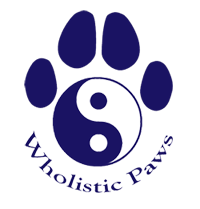Services
Acupuncture
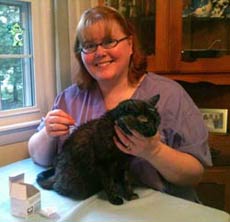 Acupuncture has been used successfully for nearly 4000 years on animals, as well as human beings. As a matter of fact, it is still the treatment of choice for one quarter of the world's population for many problems. It is now being utilized by an increasing number of veterinarians, alongside Western medicine, for various disease conditions. It is not a panacea, or cure-all, but in certain disease conditions it works well.
Acupuncture has been used successfully for nearly 4000 years on animals, as well as human beings. As a matter of fact, it is still the treatment of choice for one quarter of the world's population for many problems. It is now being utilized by an increasing number of veterinarians, alongside Western medicine, for various disease conditions. It is not a panacea, or cure-all, but in certain disease conditions it works well.
Frequently Asked Questions
What is acupuncture?
How does acupuncture work?
What diseases can acupuncture treat?
Is acupuncture safe?
Is acupuncture painful?
How long do acupuncture treatments last and how often are they given?
How do I choose a veterinary acupuncturist?
What is acupuncture?
Acupuncture is the insertion of needles into specific points on the body to cause a desired healing effect. Acupuncture can be used as a treatment for many ailments as well as preventive medicine. Modern veterinary acupuncturists use a wide variety of equipment including solid needles, gold beads, electricity, heat, massage and low power lasers to stimulate acupuncture points.
How does acupuncture work?
According to ancient Chinese medical philosophy, disease is the result of an imbalance of energy in the body. Acupuncture is believed to balance this energy and assist the body to heal disease. In Western terms, acupuncture can assist the body to heal itself by causing certain physiological changes. For example, acupuncture can stimulate nerves, increase blood circulation, relieve muscle spasm, and cause the release of hormones, such as endorphins (one of the body's pain control chemicals) and cortisol (a natural steroid). Although many of the physiological effects of acupuncture have been studied, many more are still unknown. Further research must be done to discover all of acupuncture's effects and its proper uses in veterinary medicine. While acupuncture is not a cure-all, it can work very well in up to 70-80% of cases (when it is indicated for that condition).
What diseases can acupuncture treat?
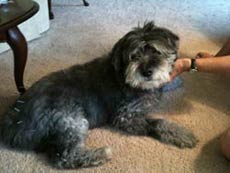 Acupuncture is indicated for functional problems such as those involving paralysis, noninfectious inflammation (such as allergies), and pain. For small animals, the following are some general conditions which may by treated with acupuncture:
Acupuncture is indicated for functional problems such as those involving paralysis, noninfectious inflammation (such as allergies), and pain. For small animals, the following are some general conditions which may by treated with acupuncture:
- Musculoskeletal problems such as arthritis, muscle soreness, or vertebral disc disease.
- Skin problems such as chronic ear infections, lick granulomas, and allergies.
- Respiratory problems such as laryngeal paralysis and feline asthma.
- Gastrointestinal problems such as diarrhea and constipation.
- Neurologic problems such as seizures, nerve paralysis, and behavioral disorders.
- Sports Medicine needs such as relieving minor sports injuries as they occur and helping to keep muscles and tendons resistant to injury.
Is acupuncture safe?
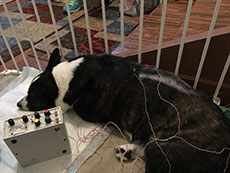 When administered by a properly trained veterinarian, acupuncture is one of the safest forms of medical treatment for animals. Side effects of acupuncture are rare, but they do exist. An animal's condition may seem worse for up to 48 hours after a treatment. Other animals may become sleepy or lethargic for 24 hours after acupuncture. These effects are an indication that some physiological changes are developing, and they are most often followed by an improvement in the animal's condition.
When administered by a properly trained veterinarian, acupuncture is one of the safest forms of medical treatment for animals. Side effects of acupuncture are rare, but they do exist. An animal's condition may seem worse for up to 48 hours after a treatment. Other animals may become sleepy or lethargic for 24 hours after acupuncture. These effects are an indication that some physiological changes are developing, and they are most often followed by an improvement in the animal's condition.
Is acupuncture painful?
For small animals, the insertion of acupuncture needles is virtually painless. Needle insertion may cause some sensation, such as tingles, cramps, or numbness which may be uncomfortable to some animals. In all animals, once the needles are in place, there should be no pain. Most animals become very relaxed and may even become sleepy during treatment.
How long do acupuncture treatments last and how often are they given?
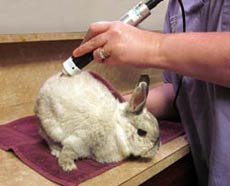 The length and frequency of acupuncture treatments varies with the condition of the patient and the method of stimulation used by the veterinary acupuncturist. Stimulation of an individual acupuncture point may take as little as 10 seconds or as long as 30 minutes. A simple acute problem, such as a sprain, may require only one treatment, whereas more severe or chronic ailments may need several or several dozen treatments. When multiple treatments are necessary, they usually begin intensively and are tapered to maximum efficacy. Patients often start with 1-3 treatments per week for 4-6 weeks. A positive response is usually seen after the first to third treatments. Once a maximum positive response is achieved (usually after 4-8 treatments), treatments are tapered so that the greatest amount of symptom free time elapses between them. Many animals with chronic conditions can taper off to 2-4 treatments per year. Your veterinary acupuncturist might also recommend including other treatments such as herbs for your pet to help enhance the effects of acupuncture.
The length and frequency of acupuncture treatments varies with the condition of the patient and the method of stimulation used by the veterinary acupuncturist. Stimulation of an individual acupuncture point may take as little as 10 seconds or as long as 30 minutes. A simple acute problem, such as a sprain, may require only one treatment, whereas more severe or chronic ailments may need several or several dozen treatments. When multiple treatments are necessary, they usually begin intensively and are tapered to maximum efficacy. Patients often start with 1-3 treatments per week for 4-6 weeks. A positive response is usually seen after the first to third treatments. Once a maximum positive response is achieved (usually after 4-8 treatments), treatments are tapered so that the greatest amount of symptom free time elapses between them. Many animals with chronic conditions can taper off to 2-4 treatments per year. Your veterinary acupuncturist might also recommend including other treatments such as herbs for your pet to help enhance the effects of acupuncture.
How do I choose a veterinary acupuncturist?
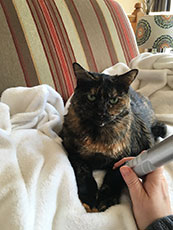 Veterinary acupuncturists must be licensed veterinarians. A veterinarian is in the best position to diagnose an animal's health problem and then to determine whether an animal is likely to benefit from an acupuncture treatment versus medical or surgical intervention. Veterinary acupuncturists should also have formal training in the practice of acupuncture for animals. The more your veterinarian knows about the traditional Chinese philosophies and Western scientific basis for acupuncture, the more sure you can be that your pet will be treated properly.
Veterinary acupuncturists must be licensed veterinarians. A veterinarian is in the best position to diagnose an animal's health problem and then to determine whether an animal is likely to benefit from an acupuncture treatment versus medical or surgical intervention. Veterinary acupuncturists should also have formal training in the practice of acupuncture for animals. The more your veterinarian knows about the traditional Chinese philosophies and Western scientific basis for acupuncture, the more sure you can be that your pet will be treated properly.
At Wholistic Paws, we recognize that many pets needing acupuncture are either too frightened or painful to travel to the veterinarian's office for treatment. In light of this, we are very committed to offering acupuncture visits for your pet in the comfort of your own home at convenient times for your family. If you are interested in acupuncture for your pet, please contact Wholistic Paws to schedule your pet's first acupuncture visit today!
